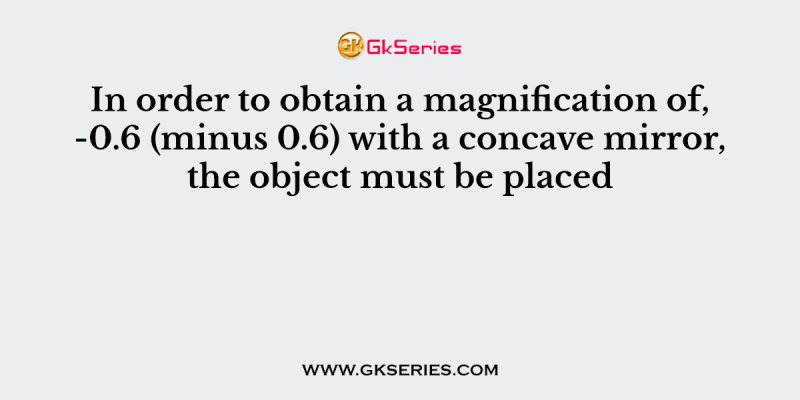
In order to obtain a magnification of, -0.6 (minus 0.6) with a concave mirror, the object must be placed
READ MORE +
In order to obtain a magnification of, -0.6 (minus 0.6) with a concave mirror, the object must be placed
READ MORE +
An object is placed 20 cm in front of a plane mirror. The mirror is moved 2 cm towards the object. The distance between the positions of the original and final images seen in the mirror is
READ MORE +
If an object is placed 21 cm from a converging lens, the image formed is slightly smaller than the object. If the object is placed at a distance of 19 cm from the lens, the image formed is slightly larger than the object. The approximate focal length of the lens is:
READ MORE +
Which position of the object will produce a magnified virtual image, if a concave mirror of focal length 15 cm is being used?
READ MORE +
A lens of focal length 12 cm forms an erect image, three times the size of the object. The distance between the object and image is
READ MORE +
An object is placed at 100 mm in front of a concave mirror which produces an upright image (erect image). The radius of curvature of the mirror is
READ MORE +
A ray of light passes from a medium X to another medium Y. No refraction of light occurs if the ray of light hits the boundary of medium Y at an angle of:
READ MORE +
A ray of light is travelling in a direction perpendicular to the boundary of a parallel glass slab. The ray of light
READ MORE +
A concave mirror produces a magnification of +4. The object is placed
READ MORE +
A ray of light that strikes a plane mirror PQ at an angle of incidence of 30o, is reflected from the plane mirror and then strikes a second plane mirror QR placed at right angles to the first mirror. The angle of reflection at the second mirror is:
READ MORE +
If the magnification produced by a lens has a negative value, the image will be
READ MORE +
If the image is formed in front of the mirror, then the image distance will be
READ MORE +